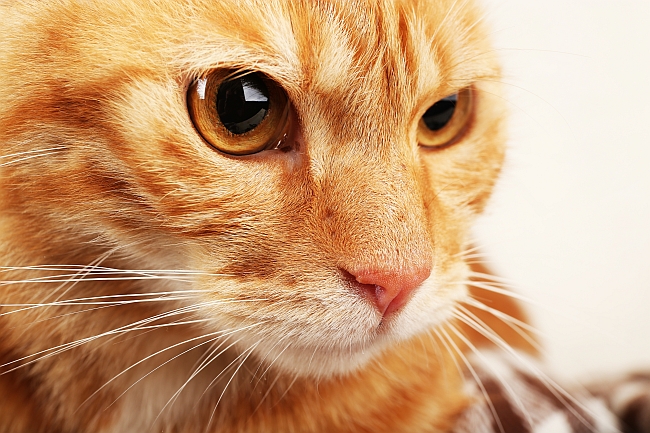
One of the most iconic features on a feline is their whiskers. These vibrissae, tactile hairs, are much thicker than a cat’s regular fur-coat hairs, and are sensory touch receptors which play an essential role in a feline’s survival. Whiskers are part of the evolutionary adaptation which enabled certain animals to be able to hunt nocturnally while their predators would be sleeping. The whiskers would help the creatures traverse through the darkness with agility and poise, being able to “read” their surroundings through these prominent sensory hairs. The same applies to whiskered nocturnal marine mammals such as seals and walruses, as well as burrowing animals that spend the majority of their time in the dark such as mice, rats, chinchillas, moles, groundhogs. Cats, from domestic pets to the kings of the jungle, would be lost without the use of their trusty whiskers.
What do whiskers do?
- Sense the environment: A cat’s whiskers are deeply imbedded in her skin and surrounded by nerves. Because of this, they are able to detect the slightest change in temperature, movement of wind, etc. The whiskers help a cat understand her surroundings, in far greater detail than even her eyes can observe. The whiskers are so sensitive that if tampered with, cut or damaged in any way, a cat’s ability to hunt and navigate would be seriously impaired.
- Protect eyes: Designed to help a cat hunt or travel through the dark, the whiskers also can protect a cat’s eyes when they are walking or stalking through grassy areas and bushes. The moment the whiskers come in contact with an object, it causes a reaction to blink, thereby protecting the eye.
- Measure spaces: Before venturing through a hole or small passageway, cats typically push their heads through first to see if their body will fit. Unless a cat is severely obese, usually his whiskers will reach to the exact width of his body; therefore a cat will assess if he can fit through a hole based on whether or not his whiskers bend when he puts his head in it.
- Help with hunting: Since cats are far-sighted, they have trouble seeing their prey when it is up close, and even have limited range of anything below their noses. Whiskers help cats while they hunt, to determine if the prey is close to their face and in the right position for the final blows. The whiskers on a cats face and legs help him “see” how close the prey or cat toy may be, and the carpal whiskers of a cat (located in his wrist) will help him sense if his prey is moving (and still alive) or if it is still.
- Warn of danger: Cat whiskers can also detect air currents, which warn if there is an approaching threat. The vibrissae are a key part of how felines measure their surroundings, including the tension and stability of the area around them.
- Indicate moods: The whiskers of a cat are a helpful sign to humans, since they tend to reflect what mood the feline is in. For example, when your cat is happy and relaxed, the whiskers fan out sideways. If they are pushed forward or extend beyond her face, she is alert, focused or excited; and if the whiskers droop down or point far backward against her face, she is angry or scared and feeling threatened.
Facts about cat whiskers
- Cats have 8-12 whiskers on both sides of the nose. However, they also have shorter sensory whiskers above the eyes, below the chin, and on the lower part of the front legs. All of these whiskers are vital in helping a cat pick up information about the environment.
- Because of the accuracy and sensitivity of whiskers, blind cats are still able to function by relying solely on their whiskers.
- Each whisker’s pattern of position is unique to every cat. Similar to human finger prints, a cat’s nose and whiskers differ from any other feline.
- Cats of the Sphinx breed sometimes have no whiskers at all!
- Whiskers can change color. Aging cats go from midnight black to being speckled with gray or white whiskers as they grow older. Humans aren’t the only ones who get salt and peppery!
- When the British say someone is “the cat’s whiskers” they mean that person is “better than everyone else.”

